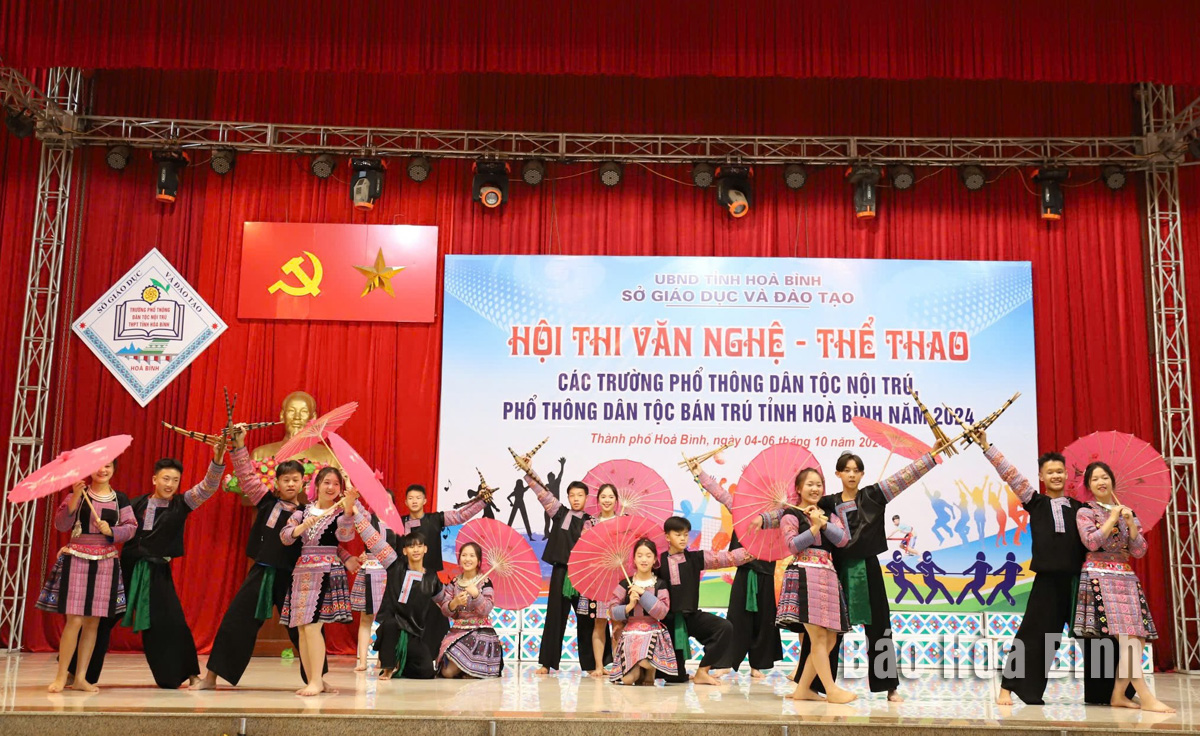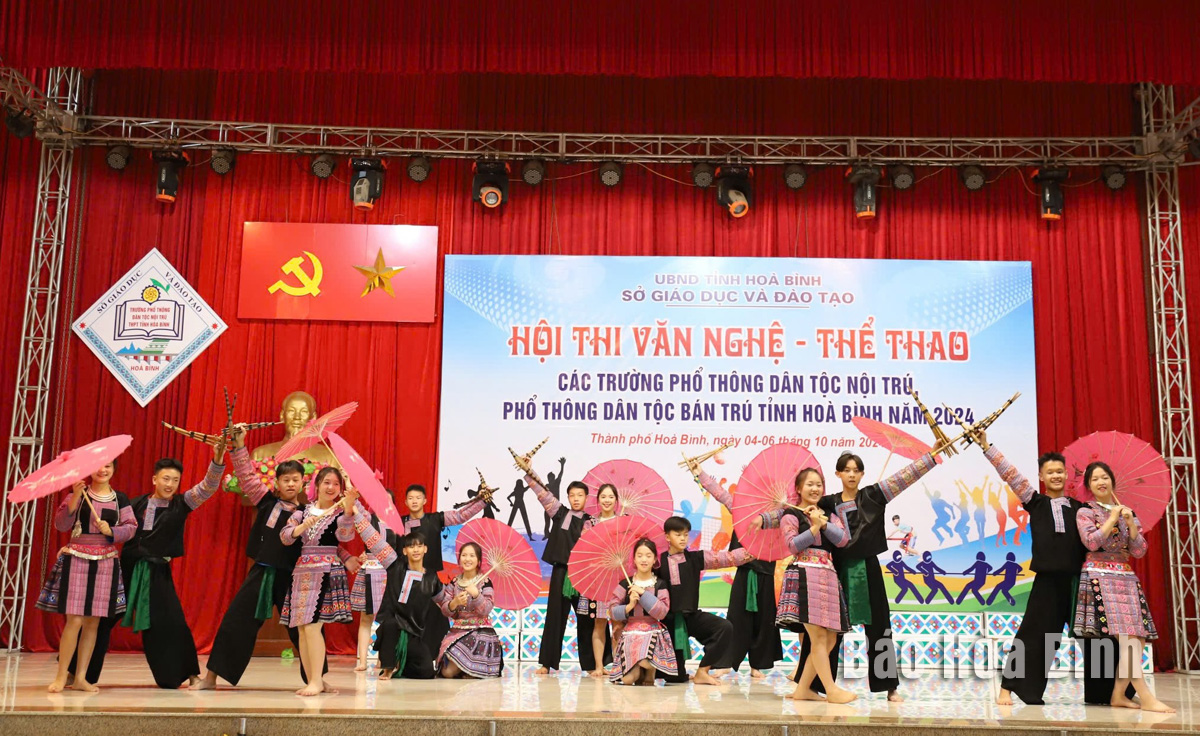
The opening ceremony of the 2024-2025 academic year at Da Hop Inter-Level School in Huu Nghi ward, Hoa Binh city, featured a special gong performance by students.
The school has established a Muong gong team, where students learn how to play gongs and other musical instruments of the Muong ethnic group under the instruction of Meritorious Artisan Bui Tien Xo from Vinh Tien commune, Kim Boi district.
This is just one of the many schools in Hoa Binh province making dedicated efforts, each with its own approach, to preserve and promote traditional cultural traits.
A performance by students from Mai Chau B Boarding Secondary and High School for Ethnic Minority Groups at 2024 Cultural and Sports Competition for Boarding and Semi-Boarding Schools for Ethnic Minorities in Hoa Binh province.
In early October, the provincial Department of Education and Training held the 2024 Cultural and Sports Competition for Boarding and Semi-Boarding Schools for Ethnic Minority Groups, attracting the participation of 24 schools with nearly 400 students competing in the cultural category. This event truly provided a platform for students to improve their understanding of cultural heritage.
Over the past years, apart from providing knowledge and moral education for students, the department has consistently focused on fostering their patriotism. Special emphasis has been placed on educating them about preserving and promoting the cultural identities of local ethnic groups.
Department Deputy Director Nguyen Quang Minh said such educational activities are tailored to the psychological and developmental characteristics of students as well as schools’ conditions. They are integrated into major lessons and extracurricular activities. Some schools have also stablished spaces showcasing.
With an increasingly vibrant and widespread emulation movement aimed at building cultured residential areas and cultured families, Yen Thuy District has been making steady progress toward improving both the material and spiritual well-being of its people, while fostering a civilized, prosperous, beautiful, and progressive community.
Once lacking recreational spaces and community facilities, Residential Group 2 in Quynh Lam Ward (Hoa Binh City) has recently received attention for the construction of a new, spacious, and fully equipped cultural house. The project followed the model of state support combined with public contributions in both labor and funding.
The "All people unite to build cultural life" movement, which has been effectively integrated with Kim Boi district’s socio-economic development goals, is fostering a lively spirit of emulation across local residential areas, hamlets, villages, public agencies, and enterprises. In addition, through the initiative, traditional cultural values are being preserved and promoted, while community solidarity and mutual support in poverty reduction and economic development are being strengthened.
A working delegation of the Hoa Binh provincial People’s Committee led by its Permanent Vice Chairman Nguyen Van Toan on June 11 inspected the progress of a project to build the Mo Muong Cultural Heritage Conservation Space linked to tourism services in Hop Phong commune, Cao Phong district.
Born and growing in the heroic land of Muong Dong, Dinh Thi Kieu Dung, a resident in Bo town of Kim Boi district, in her childhood was nurtured by the sweet lullabies of her grandmother and mother. These melodies deeply imprinted on her soul, becoming an inseparable part of her love for her ethnic group's culture. For over 20 years, this love for her hometown has driven Dung to research, collect, and pass down the cultural values of the Muong people to future generations.
In the final days of May, the Ethnic Art Troupe of Hoa Binh Province organized performances to serve the people in remote, mountainous, and particularly disadvantaged areas within the province. These were not just ordinary artistic shows, but they were the meaningful journeys aimed at spreading cultural values, enhancing the spiritual life of the people and contributing to the preservation of ethnic minority cultural identities.



